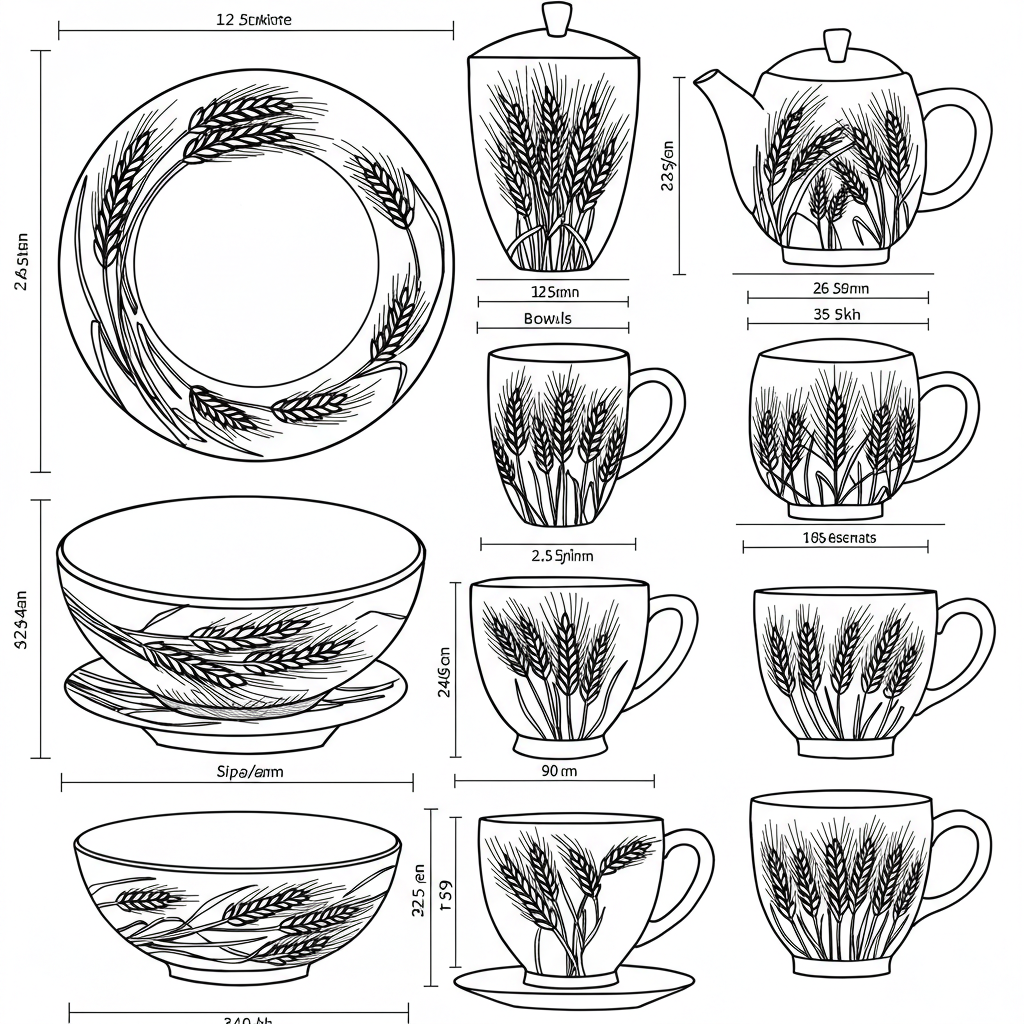In an era where conscious consumption defines lifestyle choices, a humble agricultural byproduct is redefining modern dining. Born from the golden wheat fields of China’s heartland, wheat straw tableware emerges as a silent hero in the sustainability movement. This immersive exploration traces its journey from forgotten crop residue to a design-forward kitchen essential, blending environmental science with tactile beauty.
From Burning Fields to Beautiful Plates


Every harvest season leaves behind mountains of wheat straw – a fibrous residue traditionally burned, choking skies with smoke. Our innovation intercepts this cycle, transforming what was once waste into durable, food-safe tableware. Through a proprietary three-day process, fresh straw undergoes rigorous purification, emerging as material that rivals plastic in durability yet returns harmlessly to earth.
At the core lies German-engineered (low-temperature molding), a precise dance of heat and pressure. Workers carefully maintain temperatures between 140-160°C – hot enough to shape, yet gentle enough to preserve natural antimicrobial properties. This energy-efficient process consumes 63% less power than conventional plastic production, while achieving zero wastewater discharge through closed-loop water recycling.
Design That Whispers Nature’s Language

The collection’s quiet elegance reveals itself in subtle details: bowls curve at a 15-degree angle to nestle comfortably in palms, plate rims ripple like wind-kissed wheat fields, and matte surfaces mimic sun-baked earth. Milan-based designer Luca Rossi explains, “We aimed not to shout ‘eco-friendly,’ but to create objects that feel inherently connected to their origins.”
The Circle Closes: Graceful Return to Earth

Unlike plastics haunting landfills for centuries, wheat straw tableware completes its lifecycle with poetic simplicity. Buried in soil, it dissolves within a year, nourishing new growth. When incinerated, it releases only water vapor and ash – closing the agricultural loop in alignment with nature’s rhythms.
Voices from the Table
Shanghai-based chef Elena Torres shares, “I initially doubted eco-tableware could withstand professional kitchens. Now, 80% of my tasting menus feature these pieces.” Parents particularly praise the durability – one review notes surviving 37 toddler drops without chipping.
Living with Nature’s Tableware
Care mirrors the product’s philosophy: gentle and chemical-free. Users learn to avoid abrasive scrubbers, embrace air-drying, and appreciate how the matte finish resists water spots. For occasional microwave use, a simple rule applies – keep it under three minutes, as one would respect any natural material.
Conclusion: Dining as Daily Activism
These unassuming tableware sets quietly challenge our throwaway culture. With every meal served, they tell a story of circular economies and thoughtful design – proving that sustainability isn’t about sacrifice, but about rediscovering harmony with nature’s wisdom.
Post time: Apr-22-2025












